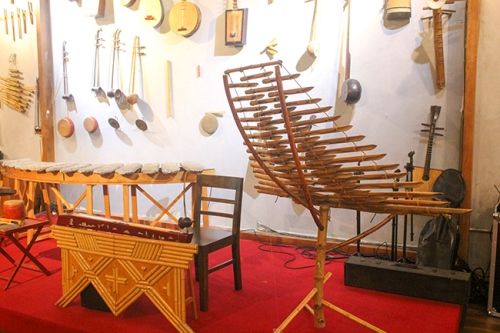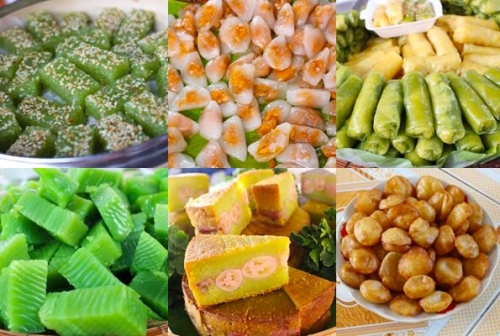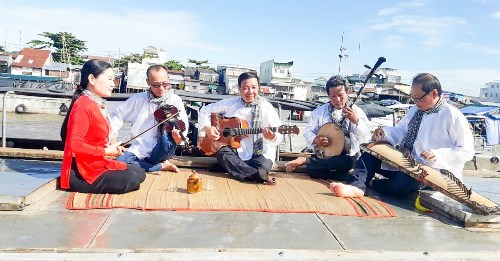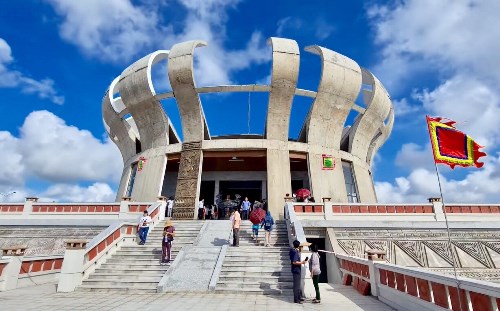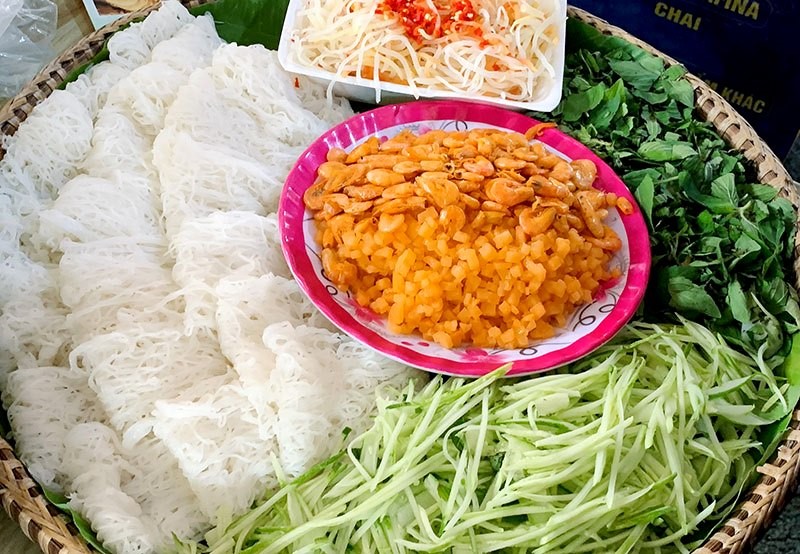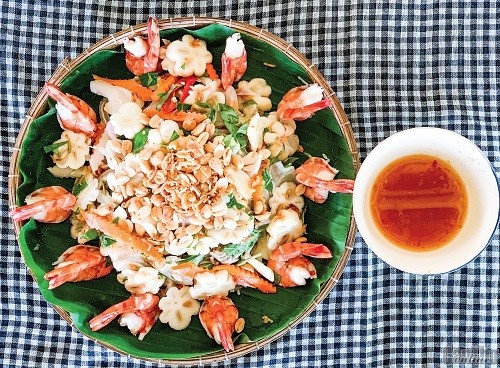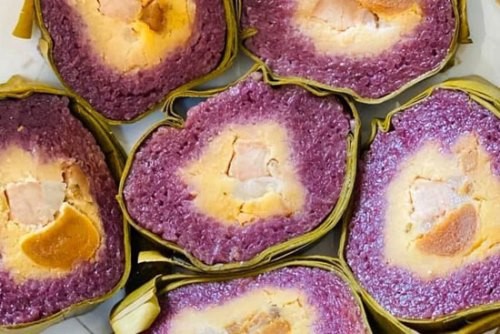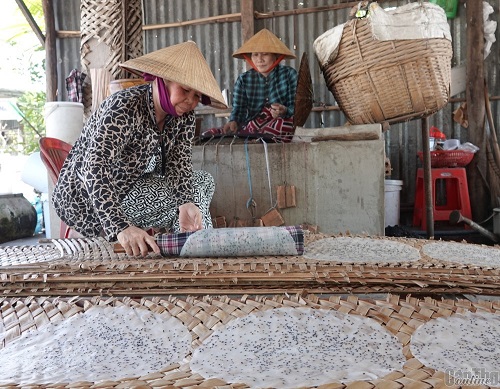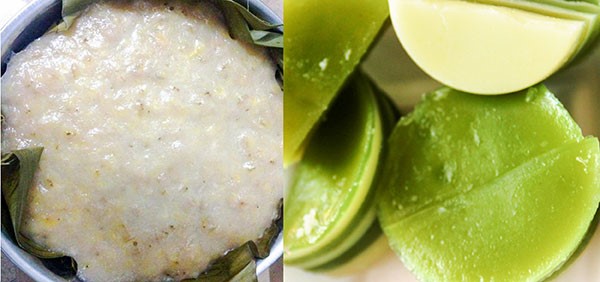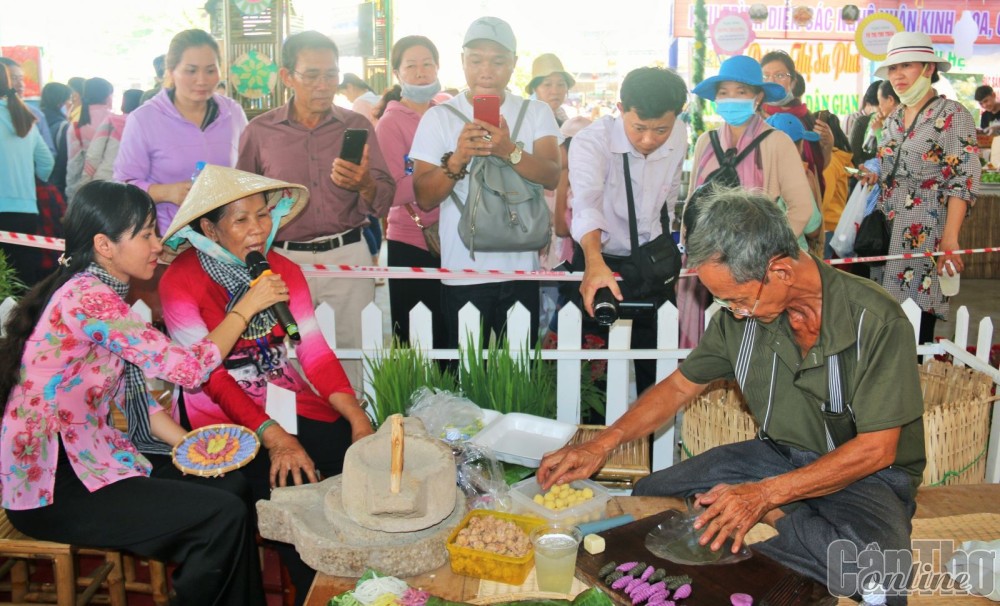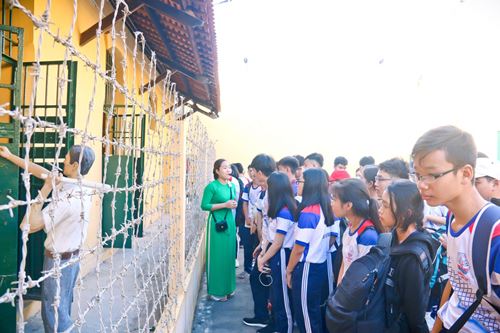
June 28th, 1996, the Ministry of Culture and Information issued Decision No. 1460-QD/VH to rank Cần Thơ Grand Prison as a national level historical site and this was inscribed on the stele on the left of the gate. According to documents compiled by the Cần Thơ Museum, Cần Thơ province was established in 1876 and only 10 years later (1886) jailhouse named "Prison Provinciale" was built. This penitentiary, which is often called Cần Thơ Grand Prison, was built on an area of 3.762m2, adjacent to the Province Chief’s Palace (now near the headquarters of the People's Committee of Cần Thơ city). When the Geneva Agreement was signed in 1954, Vietnam was temporarily divided, Cần Thơ Grand Prison was renamed the correctional facility under the Republic of Vietnam. After the South Vietnam was liberated and the country was unified (April 30th, 1975), Cần Thơ Grand Prison ended its role after nearly a century (99 years).
Cần Thơ Grand Prison is surrounded by thick walls of 3.6m to 5m high, filled with glass scraps and barbed wire fences. At each corner, there is a 6m high watchtower with guards and floodlights illuminating the night to keep an eye on inmates. Cần Thơ Grand Prison is separated from the residential area by two roads (Ngô Gia Tự street on the front and Bà Triệu street on the right). Inside the Grand Prison, there are 21 prison cells and chambers for solitary confinement. The prescribed capacity in each cell is only about 30 to 40 people but sometimes the number of prisoners is over 100 people. Looking from the front, the Grand Prison’s entrance is an archway. On the left side of the archway is the section for female prisoners and on the right is the area for male prisoners. In addition, there are pagodas, churches, kitchens, wardens’ houses, an in-prison vocational house for prisoners, and so on.
During the French colonial period, Cần Thơ Grand Prison is a place to detain and brutally torture hundreds of Vietnamese soldiers and people who joined the Uprising and leaders in Cần Thơ, Sóc Trăng, Bạc Liêu, Cà Mau provinces… The prescribed capacity in each cell is only about 30 to 40 people but sometimes the number of prisoners is up to 70 to 80 people. Especially after the Vietnam’s Southern Revolution, the enemies frantically used all tricks to terrorize and take revenge on our people. Many leaders, party members, and Vietnamese people were arrested by French colonialists in Cần Thơ Grand Prison like Mr. Quản Trọng Hoàng (Cần Thơ Inter-Provincial Party Committee Secretary), Mr. Lê Văn Nhung (Secretary of the Cần Thơ Provincial Party Committee), Mr. Ngô Hữu Hạnh (Cần Thơ Provincial Standing Committee) and many other comrades. Right in front of the Grand Prison’s entrance, at 9:30, on June 4th, 1941, the French colonialists executed Mr. Lê Văn Nhung and Mr. Ngô Hữu Hạnh.
Particularly, in the American War, the US imperialism issued the notorious “Law 10/59” to terrorize our people and arrest all men who were suspected “Viet Cong”; at that time the number of prisoners in each cell was up to over 100 people. For special-type political prisoners, they were locked up in separate cells, tortured to paralysis but still remained loyal to the Party, to the people, and kept fighting for national liberation till their last breath. Today, the old houses of the Grand Prison are restored with some images and the life-sized models of prisoners. We can also see a number of torture tools, images, documents, and artifacts associated with each of the political prisoners who were detained here.

A row of male prison cells in Cần Thơ Grand Prison was restored. Photo: Duy Khoi
There are many dramatic and touching stories happening at Cần Thơ Grand Prison. Visitors will be able to hear about giving birth in a prison and asking a friend to raise the child. In the last years of the war, Ms. Lê Thị Thanh (Sáu Thanh), born in 1942, was a soldier from Ca Mau's hometown, captured by the enemy on her way to work in early 1974. In prison, Ms. Sáu Thanh made close friends with Mrs. Lê Kim Tiến, a soldier in the 9th Military Region. Before being arrested, Mrs. Tiến was pregnant. Each time being tortured, she tried her best to avoid damaging her baby. Then, Mrs. Tiến gave birth in prison. Her child suffered from severe malnutrition, while she suffered from physical symptoms after torture like coughing up blood, bleeding ... It was so miserable that the comrades and sisters in the prison tried to catch lizards to feed Mrs. Tiến until there was none left on the wall of the cell. Knowing Mrs. Tiến could not survive any longer, the enemy released her. Mrs. Tiến died a week after being released from prison. While in prison, Mrs. Kim Tiến earnestly asked Ms. Sáu Thanh to raise her child if she died. Ms. Sáu Thanh made a promise and fulfilled her promise to her comrade and inmate. She named Mrs. Kim Tiến’s child Việt Tiến (the combination of the father's and mother's names). Mrs. Thanh raised and cared for Việt Tiến like her own child from her youth until her old age despite all hardship. Ms. Sáu Thanh has no husband and children, saving all her love for the children of her dear comrade.
The artifacts and documents on display at the Cần Thơ Grand Prison show that despite torture, the party members in the prison still have their Party Cells as well as Party Committees to study and fight against the enemies every hour, every moment to resolutely preserve the revolutionary qualities. Once, female political prisoners took the chance to beat Nam Bia (a betrayer, an informant) which caused a ruckus and turmoil in the whole prison area. In the years 1968-1970, female political prisoners mobilized and encouraged other prisoners to fight for the rights to play outside, to have representatives transferred gifts to prisoners, to separate political prisoners from other prisoners, etc. Political prisoners gradually came up with higher struggle forms and demands such as hunger strikes, have nurses to distribute medicine and treat patients, refuse to salute the flag, fight against "political learning”, ask for prison food improvement, and so on. It was the indomitable fighting spirit as well as the patriotism of the political prisoners that enlightened and won over many supervisors, prison guards. As a result, these people volunteered to become our informants and supplied information to us about the external situation of the enemy and other political prisoners. Therefore, the political prisoners could take precautions or had a means of fighting the enemy in prison.
Today generations always remember and appreciate the stories regarding heroism and patriotism in Cần Thơ Grand Prison.
Source: Cần Thơ Newspaper – Translated by Hoang Dat





